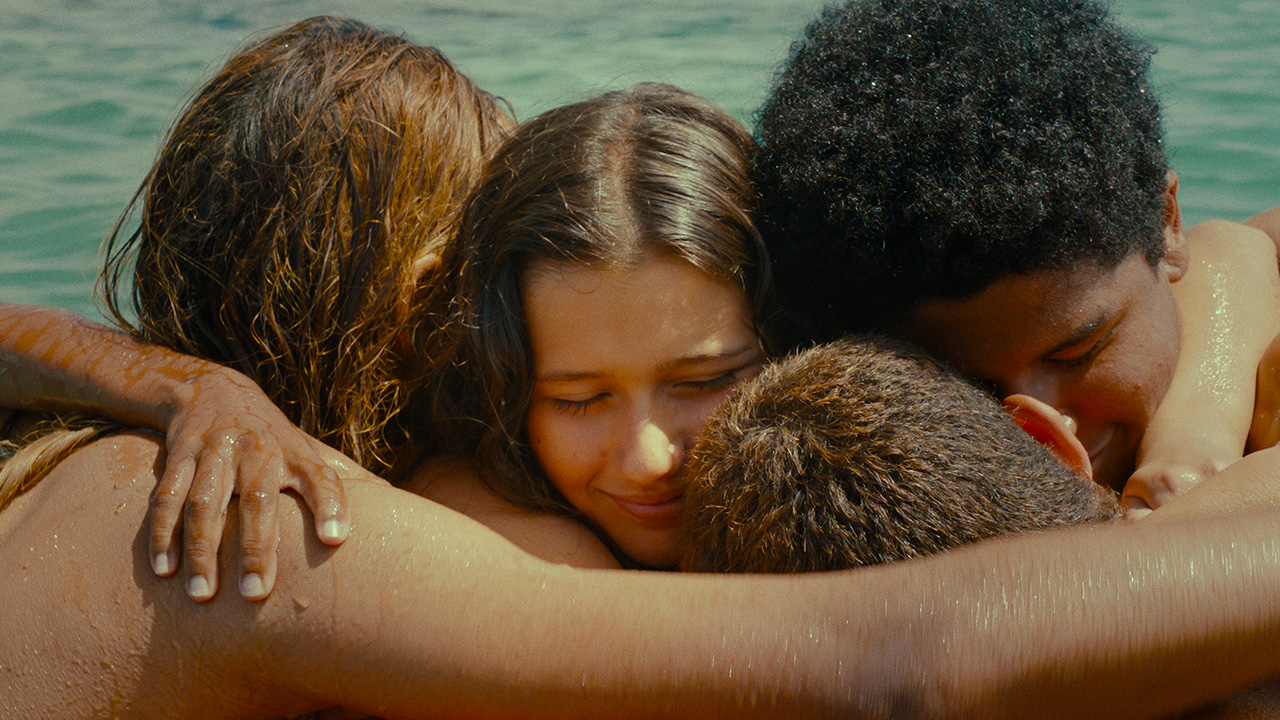review
In an underwater scene, a young woman dives without any special equipment. With only her goggles, she confronts a sea ray almost as big as herself. The camera frames her frantically, shaking with her every movement in a buzzing kind of empathy until finally, the ray comes in and aligns with her. Then, the image is still: a long shot of creature and human staring at each other in shared vulnerability. One is an intruder and the other a dweller, but both are arrested in time and underwater. The poeticism of this opener sets up the tone of Heartless, which features bittersweet melancholy and a hint of mysticism, profound and sustained throughout, a result that makes first-time co-directors Nara Normande and Tião names to watch out for.
As a feature film, Heartless evolved from a 2014 predecessor short of the same name (Sem Coração in Brazilian Portuguese), which planted all the seeds for the 2023 film. Almost 10 years apart, these two films of different lengths form together a bridge over the decade with a continuous and expansive sensibility. One is already nascent in the other. Particular narrative elements correspond between the two directly: the coastal setting of northeastern Brazil—a small village called Guaxuma—where Normande herself was born, and the mysteriously taciturn girl known as “Heartless” (Eduarda Samara in both films), because she had heart surgery as a child. It’s hearsay, but it’s also strong enough that all the neighboring children single her out and use the nickname to either mock her or attract her attention. Children’s fictions are as simple as they are hurtful: if someone has a scar on their chest from surgery, then the medical procedure must have involved the heart’s removal. By turning a bodily reality into a metaphor, both films already suggest that Heartless is anything but.

If one were to pinpoint the kernel of the feature, as already present in the short, that would be the mystery of intimate encounters. In the film, Heartless is mostly alone and in a way, peripheral, both to the frame and to the other character’s lives. She lives solely with her father (played by Samara’s own father) and sells everything she fishes from the ocean to get by. While she may be marginalized, she doesn’t really mind it. Floating around like a spectral presence is daily life for Heartless, and the fact that little boys keep calling out the name they gave her makes her seem even more ghostly, like the presence you can’t help but seek, knowing it’s otherworldly.
In any case, it seems like fourteen-year-old Tamara (Maya de Vicq, Normande’s cousin) is the film’s main character, and the summer of ‘96 setting marks the last few days before her moving to Brasilia for college. Typical for this age, her very perspective is colorful, hectic, and searching, and to mirror this, cinematographer Evgenia Alexandrova utilizes long, unsteady pans to capture a desire for the surroundings.
Tamara is on the brink of teenhood and has yet to figure out a lot about herself, but one thing is unmistakable: she’s drawn to Heartless more than she dares to admit. It’s this desirability that makes Heartless even more of a spectral being, potentially even a canvas for psychological projections. But to the credit of Samara and de Vicq (who are, respectively, professional and non-professional actresses), they maintain a pure connection throughout the film. The ineffable, magnetic character of their relationship is carried over in every scene, where they’re in one of the film’s quasi-fantastic realms or its violent domestic realities.

Setting the film in 1996, in the very village she grew up in, was always Normande’s goal, and as an artist and filmmaker, she implements autobiographical inspirations not only in her fiction filmmaking, but in her work in stop motion animation as well. Instead of weighing things down, however, her nostalgia elevates every film and somehow propels it to the past. Even if we don’t define the relationship between Maya and Heartless, their fleeting encounter echoes through the end credits, and we don’t need an epilogue to tell us that it’s been a turning point in both their lives going forward.
The directorial duo Normande and Tião inaugurate even better times for Brazilian cinema, which has been recognized and awarded at many world festivals. The short film Heartless got a prize in Cannes when it premiered, and one of the production companies behind the feature also made Bacurau, the 2019 Cannes Jury Prize winner.
With their debut film, the directors don’t shy away from depicting the cruel reality of class struggle, violent streets, and corruption alongside the magic of first love. Life is full of contradictions, and nowhere is that more apparent than in Brazil’s poorest states, which are shown here to contain astonishing beauty—beaches, oceans, skies—without tipping the scale towards one extreme or the other. Heartless then leaves us with the mysteries of the natural and the supernatural, where suspended in between, is a human being who is loving, living, dying, but always hoping.
Curated by humans, not algorithms.
© 2024 A Good Movie to Watch. Altona Studio, LLC, all rights reserved.